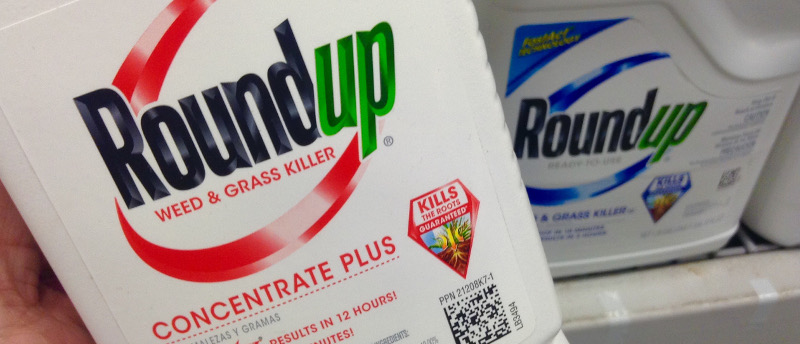UPDATE 3/28/19: A unanimous jury awarded $80 million to the plaintiff, finding that Monsanto had a duty to warn Hardeman and other consumers about the potential dangers of its glyphosate formula.
2nd Roundup Verdict Goes Against Monsanto

Earlier this week, the second Roundup trial in California was decided in favor of the plaintiff, meaning that Monsanto has now seen two major losses in Roundup cancer lawsuits.
The San Francisco jury came back with a unanimous verdict on Tuesday afternoon after five days of deliberation. According to the jury, Roundup played a contributing role as a "substantial factor" in the non-Hodgkins lymphoma diagnosis of plaintiff Edwin Hardeman.
Hardeman's Lawsuit Against Roundup
Hardeman is now a 70-year-old man, but according to his legal complaint, first filed in 2016, he started using Roundup in the 1980s to control weeds and poison oak on his personal property since. In October 2015, Hardeman was diagnosed with non-Hodgkin's lymphoma, a form of blood cancer that attacks the body's white cells (lymphocytes).
The scientific evidence is murky with respect to the role of glyphosate - the main active ingredient in Roundup - in the development of cancer. A number of conflicting studies have been released in the medical literature, though at least one non-governmental organization, the International Agency for Research on Cancer (IARC), has identified the chemical as "probably carcinogenic to humans."
In the mid-1980s, the U.S. Environmental Protection Agency (EPA) also listed glyphosate as a possible human carcinogen, though the federal agency later changed its classification (at the objection of some committee members). Further muddying the waters is the relatively recent revelation that some of the medical studies concluding glyphosate is safe were ghostwritten and paid for by Monsanto, making their conclusions questionable at best.
Hardeman's case relied heavily on the IARC classification and several studies that suggest the specific formulation of Roundup increases the risk of developing cancer:
- The first study, published in the scientific journal Chemical Research in Toxicology, showed that Roundup can disrupt normal cell division in sea urchins, with a suggestion that the weedkiller could have the same impact on humans (due to the similarity of the cell-division process across species).
- The second study compared the effects of several glyphosate-based products on cell-cycle dysfunction, which can contribute to the development of cancer.
- The third study used rat liver mitochondria to show that Roundup's specific formulation of glyphosate, polyethoxylated tallow amine (POEA), and other chemicals was more toxic than glyphosate alone.
- The fourth study confirmed that Roundup's formulation of chemicals was more toxic on human umbilical, embryonic and placental cells than glyphosate alone.
Hardeman's lawsuit claimed that these and other studies pointed to the potential dangers of Roundup. Furthermore, the lawsuit claimed that Monsanto knew about these dangers, but failed to warn consumers like him.
What Happens Next
Hardeman's Roundup trial is split into two phases. The jury's verdict against Monsanto (and its parent company, Bayer International) concludes the first phase, holding the agricultural products company liable - at least in part - for the development of the plaintiff's cancer. Now, the jury will go back and deliberate about how much money Bayer and Monsanto will have to pay.
An earlier lawsuit filed by former school groundskeeper Dewayne Johnson led to a verdict of $289 million against Monsanto. While the total amount was later trimmed to $78.5 million on appeal, the verdict still represents a devastating loss for Monsanto and Bayer, who are already facing more than 11,200 Roundup lawsuits. With this second verdict going against the international conglomerate, even more lawsuits could be filed by those who were negatively affected by Roundup.
In determining what types of damages to award, the jury will take into consideration a number of economic and non-economic factors, including:
- The severity of Hardeman's cancer diagnosis
- The amount of pain and suffering he has endured
- Medical costs of diagnosis, treatment, and recovery
- Lost income due to his inability to work
- Loss of consortium
The jury could also award punitive damages, which are used to punish the company for its wrongful actions. As shown in the Johnson case, if awarded, punitive damages will need to be equal to or less than the actual damages.
The Future of Roundup Lawsuits
With a second lawsuit being decided in favor of the plaintiff, Monsanto and Bayer have some big decisions ahead of them. For now, however, the companies seem intent on fighting each individual lawsuit one by one, even though its appeal in the Johnson case was ultimately unsuccessful.
For big companies like these, the decision often boils down to a bottom-line cost: Is it more expensive to fight these lawsuits or to settle? Additional big verdicts against Monsanto will make the prospect of reaching a settlement more attractive, whereas if the company can get some wins, even on appeal, they might be incentivized to keep fighting cases on an individual basis.
